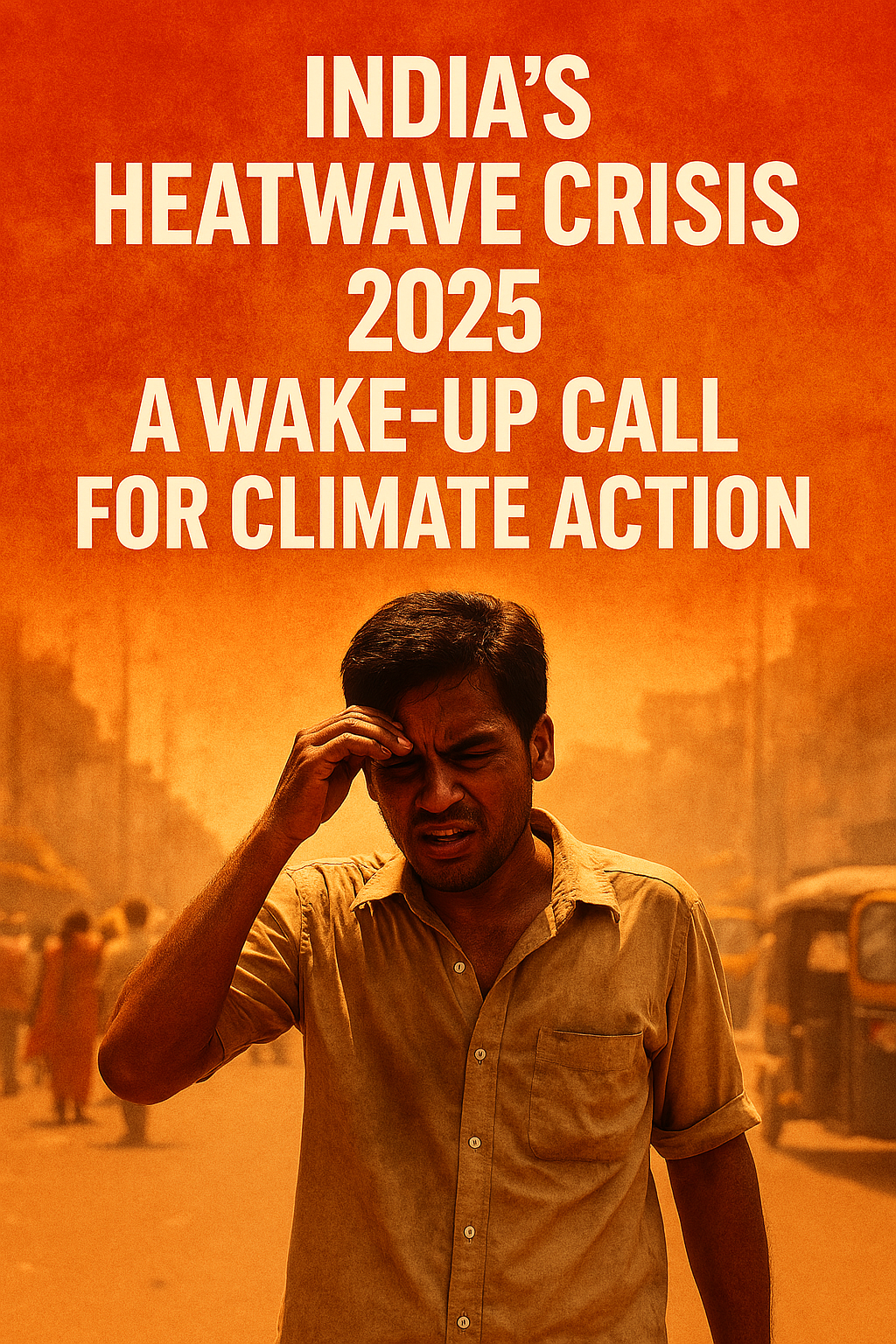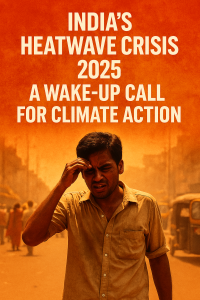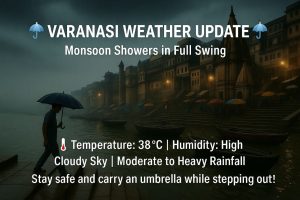India Heatwave Crisis 2025: A Wake-Up Call for Climate Action

India Heatwave
India Heatwave Crisis 2025: A Wake-Up Call for Climate Action
India Heatwave Crisis 2025 As summer peaks across India in May 2025, the country is experiencing one of the most severe heatwaves in its history. With temperatures soaring beyond 47°C in many parts of North India and the India Meteorological Department (IMD) issuing red alerts across multiple states, the heatwave has caused widespread disruptions, health emergencies, and economic consequences. The situation is not just a seasonal anomaly—it’s a warning sign about the intensifying climate crisis and the urgent need for sustainable action.
The Scale of the Crisis
India Heatwave Crisis 2025 In April and May 2025, heatwave conditions gripped several Indian states including Rajasthan, Uttar Pradesh, Madhya Pradesh, Maharashtra, and Delhi. Cities like Jaipur, Nagpur, and Prayagraj recorded temperatures above 45°C for more than 10 consecutive days. Delhi witnessed power outages due to excessive electricity demand, and water scarcity became severe in parts of the capital and neighboring regions.
According to data from the IMD, the average maximum temperature across the Gangetic plains has been 3–6°C above normal for this time of year. Hospitals are witnessing an influx of patients suffering from heatstroke, dehydration, and other heat-related illnesses. At least 150 people have died so far due to direct or indirect heat impacts, though unofficial figures may be significantly higher.
Why Are Heatwaves Becoming More Frequent?
India Heatwave Crisis 2025 Heatwaves are not new to India, but their frequency, intensity, and duration have increased in recent years due to climate change. Several factors contribute to this trend:
- Global Warming: Human-induced greenhouse gas emissions have caused the Earth’s average temperature to rise by more than 1.1°C since pre-industrial times. India, due to its geographical location, is particularly vulnerable to rising temperatures.
- Urbanization: Rapid and often unplanned urban growth leads to the “urban heat island” effect, where cities become significantly hotter than surrounding rural areas due to concrete, asphalt, and limited green cover.
- Deforestation and Land Use Change: The loss of forests and open lands reduces the earth’s natural ability to regulate temperatures and hold moisture.
- El Niño Effect: In 2025, the El Niño weather pattern is contributing to drier-than-normal conditions in many parts of India, exacerbating the heat.
Impact on Daily Life
India Heatwave Crisis 2025
Health
The most immediate impact of heatwaves is on public health. Prolonged exposure to extreme heat leads to heat exhaustion, heatstroke, and in some cases, death. Vulnerable populations—such as children, the elderly, outdoor workers, and the homeless—are at the greatest risk. Hospitals have reported an increase in patients with symptoms such as dizziness, fatigue, fainting, and high fever.
Agriculture
Heatwaves directly affect agriculture by drying out soil, stressing crops, and reducing yields. In 2025, early reports suggest that the wheat and maize crops in Punjab, Haryana, and Uttar Pradesh have suffered damage due to the scorching heat. This threatens food security and the livelihood of millions of farmers.
Water Shortage
In cities like Bengaluru, Delhi, and Chennai, water levels in reservoirs are at alarming lows. Tankers have become the only source of water for many urban slums. Rural areas, which rely heavily on groundwater and small ponds, are also in crisis.
Power Supply and Infrastructure
With temperatures soaring, electricity demand has spiked due to the increased use of air conditioning and fans. This has resulted in power outages and grid failures. Cities like Delhi and Lucknow have faced rotational power cuts, prompting anger and frustration among citizens.
Government Response
India Heatwave Crisis 2025 Both central and state governments have taken steps to mitigate the impact of the heatwave:
- Heat Action Plans (HAPs): States like Gujarat, Maharashtra, and Odisha have implemented local Heat Action Plans, which include early warning systems, public awareness campaigns, and cooling centers.
- School Closures: In several states, schools have been closed temporarily or shifted to online classes to protect children from heat exposure.
- Water Distribution: Governments have arranged for water tankers in drought-hit areas and asked industries to reduce water usage.
- Medical Preparedness: Hospitals have been instructed to keep emergency beds and IV fluids ready for heatstroke patients.
Despite these measures, experts argue that the response is still reactive rather than preventive.

The Need for Long-Term Solutions
India Heatwave Crisis 2025
1. Climate Adaptation and Resilience
India needs to integrate climate risk into urban planning and development. This includes:
- Creating more green spaces and planting heat-resilient trees.
- Promoting cool roofs and better building insulation.
- Upgrading water and power infrastructure to handle extreme conditions.
2. Early Warning and Awareness
Expanding the IMD’s early warning system and training local governments to respond quickly can save lives. More investment in public education on how to handle heatwaves is also essential.
3. Policy and Regulation
- Stricter regulations on emissions and better implementation of India’s National Action Plan on Climate Change (NAPCC) are needed.
- Agricultural policies must encourage climate-resilient crops and sustainable irrigation practices.
4. Community Involvement
India Heatwave Crisis 2025 Local NGOs and civil society groups play a crucial role in spreading awareness and delivering aid. Community-based water management and volunteer-led heat shelters can greatly enhance preparedness.
A Global Responsibility
India Heatwave Crisis 2025 While India must strengthen its internal climate adaptation strategies, it cannot act alone. Climate change is a global issue, and international cooperation is vital. Developed countries must fulfill their financial and technological commitments to help developing nations like India cope with climate extremes.
India Heatwave Crisis 2025 India, as a leader in the Global South, can also push for stronger climate commitments at forums like the G20 and COP30, and highlight the disproportionate burden poor nations bear in the climate crisis.
Conclusion
India Heatwave Crisis 2025 The 2025 heatwave in India is more than just a weather event—it’s a warning. As climate change accelerates, these kinds of extreme weather patterns are only going to become more common. The time to act is now. Government bodies, civil society, industries, and individuals must work together to create a future where India is not only prepared for such events but can prevent their worst outcomes. This heatwave must be the last wake-up call before it’s too late.




